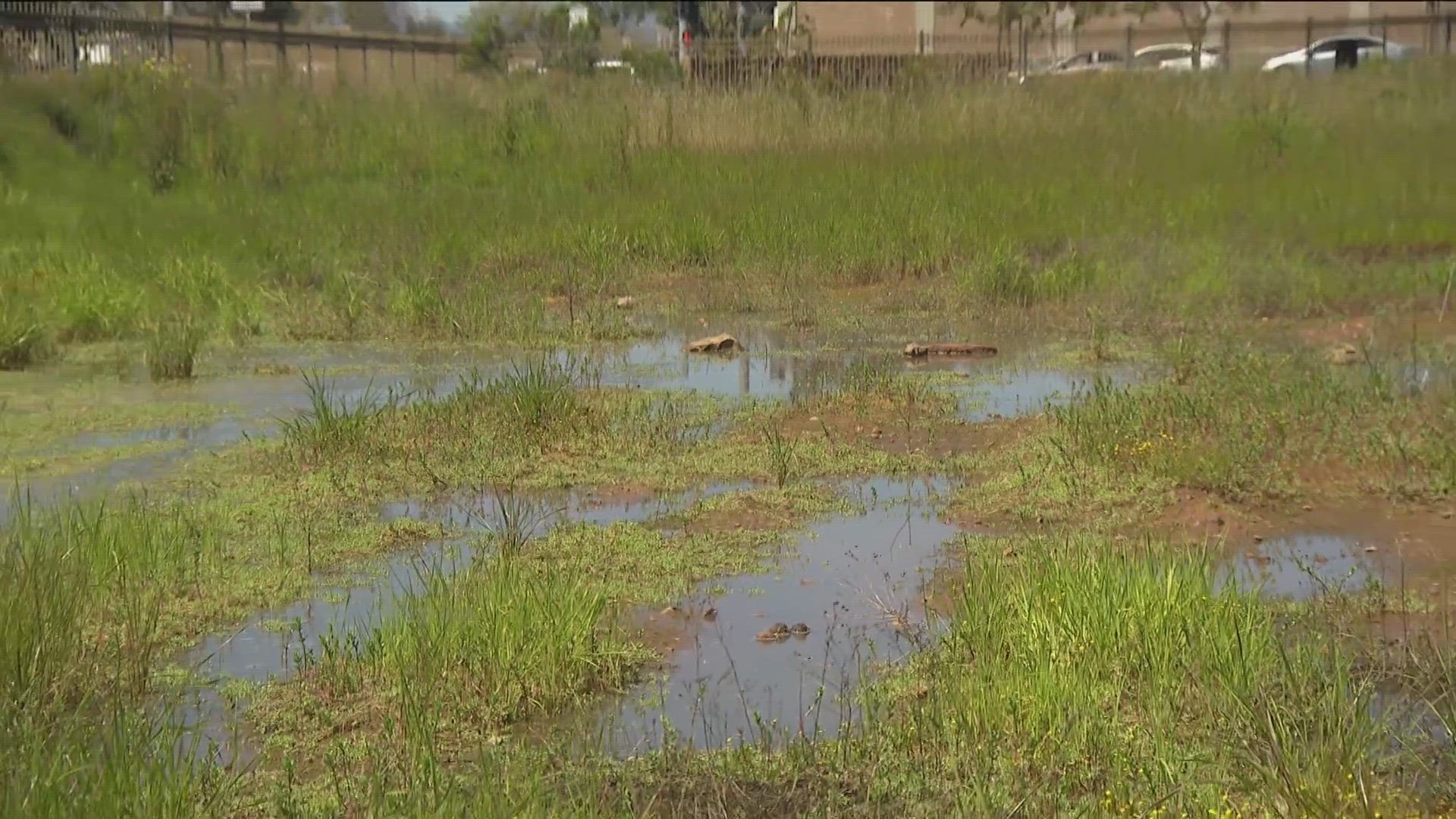SAN DIEGO — On the west end of San Diego Miramar College campus is a small Vernal pool preserve.
"These are one of the Vernal pools and over here we have a funky little snail. Wow that's cool, and it's eating the vegetation," said Sheila Madrak, San Diego Miramar College Associate Professor of Biology.
Vernal Pools occur after the winter rains on what's left of the undeveloped mesas across San Diego County. Madrak says that's when the barren landscape turns into an oasis.
"All of it's here because of the rains we had and forms its own temporal ecocsystem," she said.
It's during this very short window that nature makes Her move.
"Time for the Fairy Shrimp to come out of a suspended state, mate and make more Fairy Shrimp. The same for the Spade Foot Toad, and other fauna in the area," Madrak said.
The San Diego Fairy Shrimp along with the Spadefoot Toad are federally protected. Their lifecycle is very short, and the eggs they lay can survive in the mud when the pools dry up and then hatch when the rains return next year.
"So, this is part of the Vernal Pool system we have here on our campus. Vernal Pools are a very sensitive habitat that is protected here in San Diego County," Madrak said.
These small creatures are the building blocks for the rest of the animals that utilize these seasonal Wetlands.
"We have Cottontail Rabbits; we have lots of small mammals, rodents, we have Coyotes, we've even had Mule Deer," she said.
The pools also help birds on the Pacific flyway.
"San Diego has a ton of bird diversity, especially in the Spring and these kinds of pools are very important for birds flying through the area so they have a source of water," Madrak said.
With temperatures rise and the rains slowing down the pools are starting to dry up, but the good news any one can view them.
"So, students, faculty, staff, or the general public can come and learn about the fauna and flora in this habitat," she said.
EARTH 8: Ice loss of the "Doomsday Glacier" has scientists worried about a rise in sea levels

